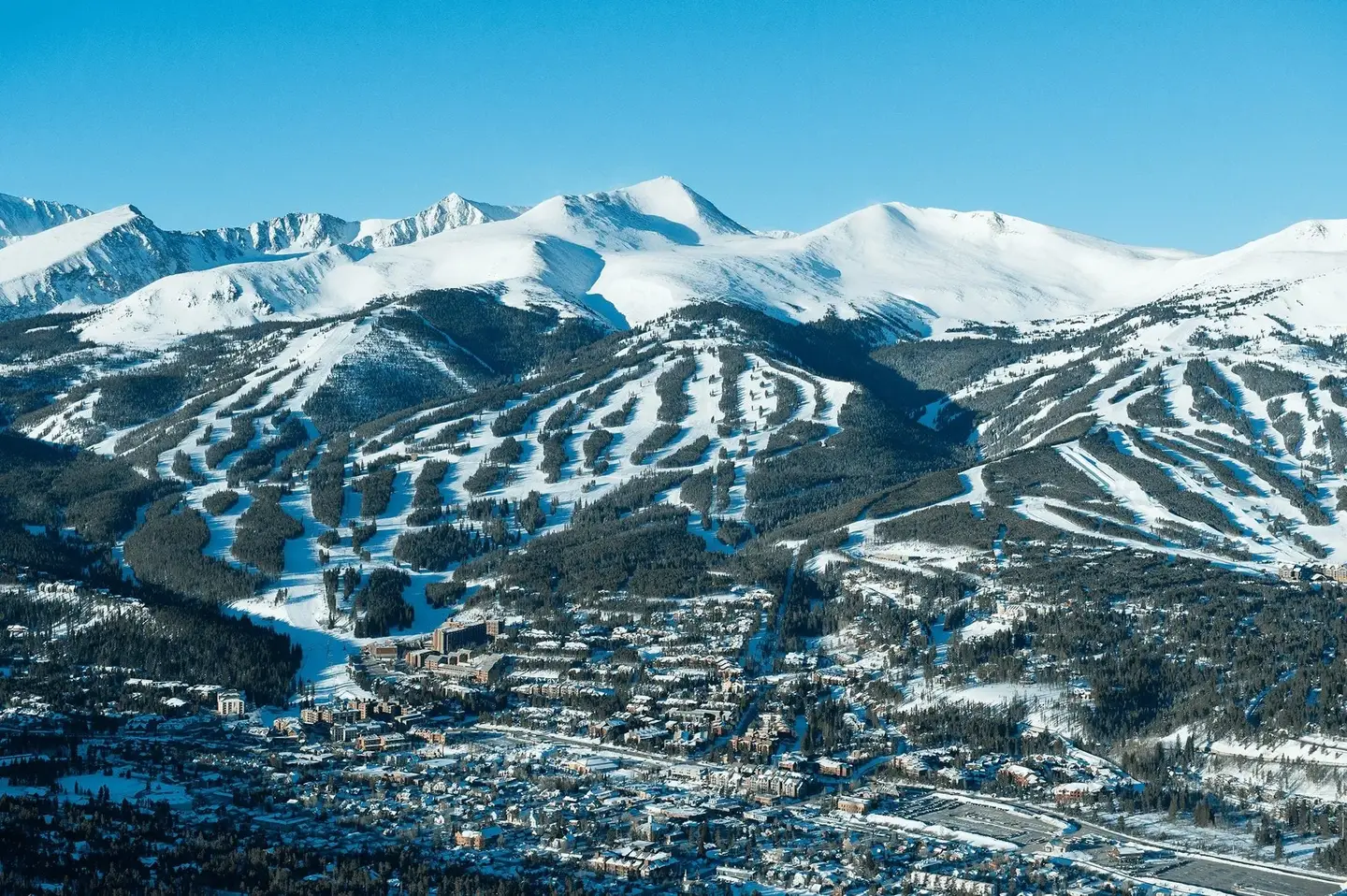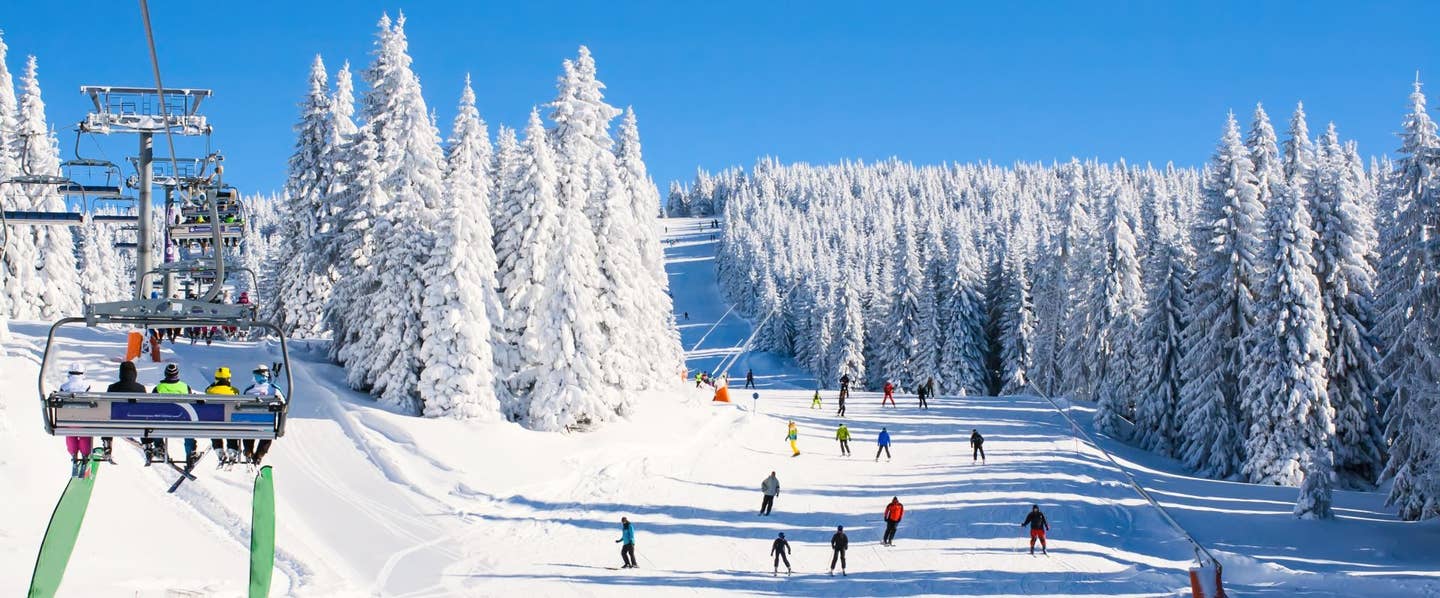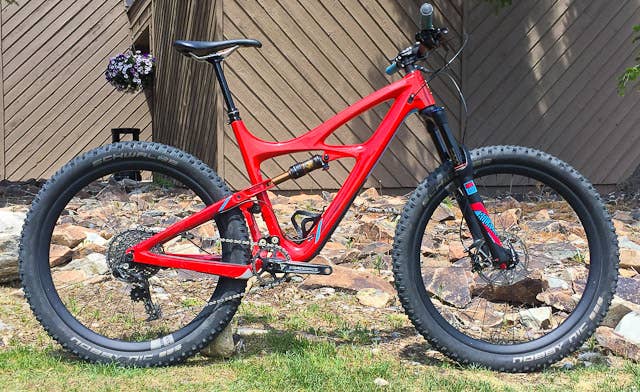

Teton Tested: The Multitalented Ibis Mojo 3
Popular Stories
You’d be forgiven for thinking at first glance that the Ibis Mojo 3 is its bigger brother, the Mojo HD3, just with those fancy new plus tires. It retains the same beautiful curves and aesthetic appeal that Roxy Lo helped refine during the rebirth of the Mojo HD3, and I’m pleased to announce that the ride quality of the Mojo 3 matches its looks.
$7599 gets you the X01 Werx build kit, which includes the Ibis 741 carbon wheels, and it didn’t leave me wanting for anything on the parts spec. Ibis offers more build options than most other companies, and each and every one is easily customizable to fit your own wants and needs. The options start with the Special Blend build, which is $3999, while the frame-only option (shock included) is $2999.
Before I dive into the numbers that make this bike great, let me address the elephant in the room. Boost. The Mojo 3 features 148 mm spacing on the rear axle, which is meant to make room for the big ol’ 2.8" Schwalbe Nobby Nic plus-sized tires.
Boost spacing has been floating around for some time now, and at the expense of cross-compatibility with your older wheelset, the increased width at the axle allows for improved tire clearance and a slight increase in the wheel’s lateral rigidity. Boost spacing also allowed for Ibis to ensure compatibility with 2x drivetrains by way of a removable front derailleur mount. 1x naysayers rejoice!
But where many other 27.5+ bikes are meant to be convertible to 29” wheels, the Mojo 3 is actually made to switch to regular 27.5” tires (I misspoke in the video about the ability to switch to 29" tires, by the way). Yes, I only said tires, not wheels. Ibis have made their own wheelsets for a few years now, the most popular of which has been the carbon 741 wheel, which features a 35 mm internal width that pairs up nicely with tires from 2.3” all the way up to 2.8” in width.
But while the Mojo 3 can quickly and easily be fitted with your 2.3” tires, after having spent some time rocking it with 2.8” tires, I have a hard time believing you’ll be pining for your “skinny” tires anytime soon. More on this below.
NUMBERS DON'T LIE
 Beautiful. Amazing. Perfect. Pick three. Ryan Dunfee photo.
Beautiful. Amazing. Perfect. Pick three. Ryan Dunfee photo.
While the Mojo 3, like the rest of Ibis’ bikes, doesn’t sport the most progressive (read: long, low and slack) geometry, it has a really well thought out design that makes it fun for anyone and everyone to ride. I tested the Mojo 3 in a size Large, which fit me perfectly at 5’11”. And don’t let the weight go unnoticed; at 27 pounds, it’s feathery for a bike of its caliber.
Some of the dimensions that really make this bike tick are its super-short 16.7” chainstays (that’s shorter than many of yesterday’s 26” bikes had!), a 66.8-degree head angle, and a 13.2” bottom bracket height.
Something really cool about the BB height on this bike is that it remains almost exactly the same regardless of whether you’re riding with regular or plus-sized tires. There are two reasons for this. Schwalbe’s Nobby Nic 2.8” tires may be wide, but they’re not all that tall, so they’re within a few millimeters of the height of your average 2.3” tire. Another is that plus-sized tires are typically used at 10-15 psi lower than regular tires, so the tires themselves have a bit of sag when weighted, further normalizing your BB height.
At 73.6 degrees, the seat angle felt just right and didn’t leave any testers wandering around on the saddle looking for their optimal climbing position. And with a shorter 45.5” wheelbase, the Mojo 3 was super easy to flick around in tight terrain.
For the squishy bits, the Mojo 3 features the RockShox Pike RCT3 supplying 140 mm of smooth, controlled travel. The rear end is controlled by the Fox Float DPS with EVOL air sleeve providing 130 mm of rear travel. Yet another bike with a differential in front and rear travel lengths, but this translated into a well-balanced and controlled ride that didn’t leave me wishing for any changes in suspension configuration.
OH, THOSE PESKY CLIMBS
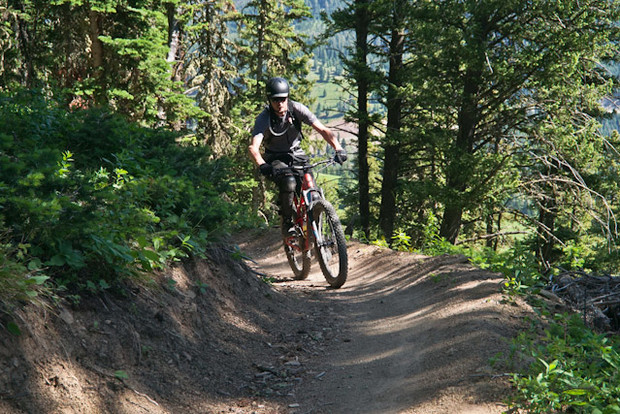 Up, up, and away - the Mojo 3 climbs like a dream. Ryan Dunfee photo.
Up, up, and away - the Mojo 3 climbs like a dream. Ryan Dunfee photo.
You’re headed out the door to your favorite trail, but what looms ahead is hundreds upon hundreds of feet of climbing to earn yourself that sweet, sweet reward of riding back downhill. Well, with the Mojo 3 you might actually start looking forward to that first half of your rides.
I must admit: I’m not too surprised by this bike’s climbing ability. The tried and true DW Link suspension design employed on Ibis’ bikes is very efficient and does an excellent job of keeping the bike planted on technical climbs. But what really surprised me was the freakish amount of control and traction afforded by the big tires.
After taking a few test runs on the bike to get a feel for it, I started messing around with tire pressure. It’s amazing the range of tire pressure you can experiment with on the Schwalbe Nobby Nic 2.8” tires.
Being at
Big Sky for the test, which is riddled with steep, rocky trails and tight, hard berms, I started off with 18 psi in both of my tires. This was great for flow trails and smashing through berms without fear of rolling the tire off the rim or burping air, but by the end of the test period I settled for something closer to 13 psi for most of my riding.
Since I haven’t ridden any other full suspension plus-sized bikes on the same terrain, I can’t make any direct comparisons to highlight the Mojo 3’s climbing abilities. But what I can tell you is that the combination of frame geometry and tire size make the Mojo 3 one of the best and most fun bikes I’ve ever had the luck to pedal uphill.
Climbing and tight trails are where the geometry of this bike really shines. The moderate reach (438 mm for the size Large) and short chainstays (16.7 inches) play well together and make the bike super easy to maneuver when climbing, and even made working my way over difficult obstacles a bit of a fun game.
TIME TO DESCEND
 The Mojo 3 is the plus-sized BMX bike you always wanted. Ryan Dunfee photo.
The Mojo 3 is the plus-sized BMX bike you always wanted. Ryan Dunfee photo.
Do you like riding rough, technical trails with roots and rocks as far as the eye can see? The Mojo 3 has you covered. Do your days consist of high-speed singletrack, smashing through turns and making the trail your playground? Add a few pounds of pressure into the tires, and the Mojo 3 is still the bike for you. Do you like to just pedal and enjoy the scenery in your local mountains? You guessed it, the Mojo 3 is your soul mate.
While the Mojo 3 doesn’t possess the brawn and outright thrashability of the Mojo HD3, it retains many of the same ride characteristics that make it fun to ride in all types of terrain.
I had a blast taking the Mojo 3 down all types of trails. High-speed flow trails, winding singletrack, and even some steeper, scarier lines. The only time it felt out of its element is where I’d expect the Mojo HD3 to fill the gaps: super steep, fast terrain with large obstacles and big airtime. That said, the Mojo 3 handles a wider variety of terrain than initially expected.
Sign Up for the TGR Gravity Check Newsletter Now
This is a bike that rewards the controlled rider. The sharp handling helped it change lines in the blink of an eye and pop over obstacles at the flick of the wrist. But it’s not a bike for plowing through obstacles. Yes, the traction is incredible and the ease of control is mind-blowing, but the Mojo 3 got a little bit squeamish when pointed down really steep terrain. However I don’t see this as a bad thing because it’s a bike whose amount of travel puts it squarely in the trail category, and it happily survived trails and riding that were much higher on the pucker factor scale.
STANDOUT FEATURES
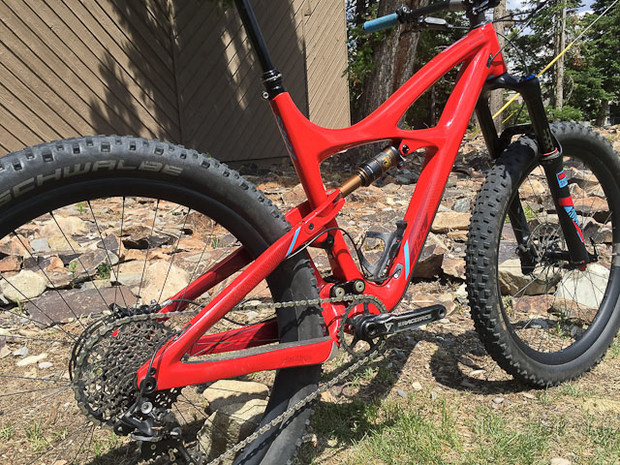 No surprise, the Ibis is built clean and comes with tons of build kit options all the way down to four grand. Ryan Dunfee photo.
No surprise, the Ibis is built clean and comes with tons of build kit options all the way down to four grand. Ryan Dunfee photo.
Being a mechanic, I appreciate Ibis’ attention to detail on the Mojo 3. The threaded (yay!) bottom bracket has an external splined interface on the drive side that accepts an ISCG 05 chainguide mount.
All of the cable entry ports for internal routing are removable for ease of use and are interchangeable. These ports have housing stops leading to the rear derailleur, so if you’re keen on running full-length housing, you’ll have to give Ibis a call and ask for open-ended ports, or get creative with a drill bit.
The cockpit of the Mojo 3 is graced with a beautiful 50 mm Thomson stem, a 760 mm Ibis carbon handlebar, and a KS Lev Integra dropper post. The drivetrain features a RaceFace Turbine crankset, and a SRAM X01 derailleur. The mighty SRAM Guide RSC brakes handle stopping duties.
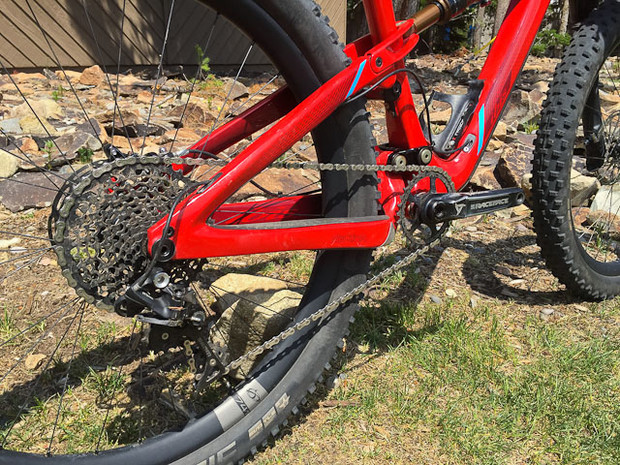 The Boost swingarm gives clearance for the massive tires, and the SRAM X01 drivetrain handles shifting just fine. Ryan Dunfee photo.
The Boost swingarm gives clearance for the massive tires, and the SRAM X01 drivetrain handles shifting just fine. Ryan Dunfee photo.
I’ll admit that I’m addicted to the simplicity of 1x drivetrains, and it’s unlikely I’ll ever own a front derailleur again, but I’m happy to see that Ibis included a (removable) front derailleur mount. Heck, even if you don’t mount a front derailleur on there, it’s still a good spot to attach a chainguide, or even a bottle opener.
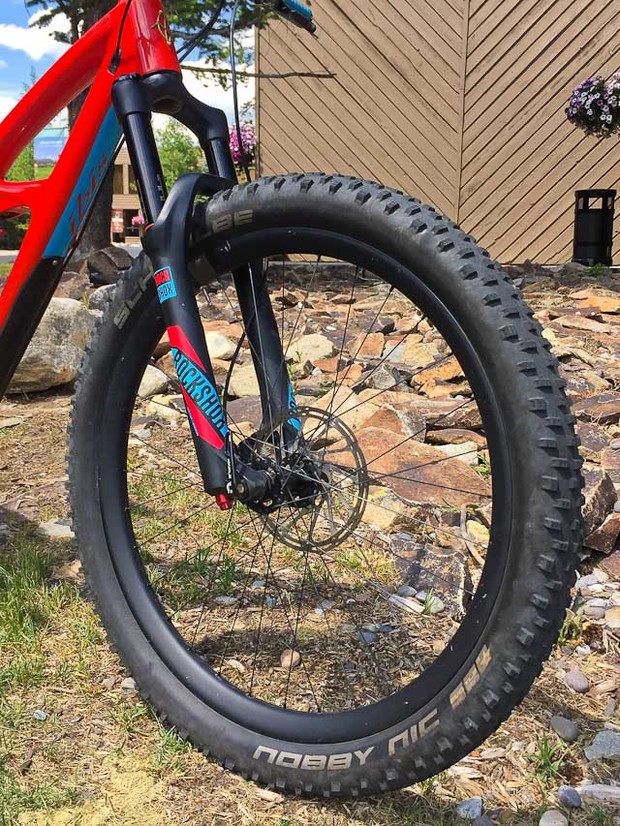 Is that a plus-sized tire or are you just happy to see me? The Mojo 3 comes with 27.5" plus-sized tires, but Ibis' 741 carbon rims can be mounted with normal 27.5" tires, too. Ryan Dunfee photo.
Is that a plus-sized tire or are you just happy to see me? The Mojo 3 comes with 27.5" plus-sized tires, but Ibis' 741 carbon rims can be mounted with normal 27.5" tires, too. Ryan Dunfee photo.
Ibis have taken protective measures on the frame, including a hard plastic downtube guard, a molded chainstay guard to muffle chain slap and keep your paint looking nice, and metal protection at the leading end of the driveside chainstay to protect it from damage from dropped chains.
DOES ANYTHING NEED TO CHANGE?
 The ability to run full-length housing to the rear derailleur would be a boon to the Mojo's durability. Ryan Dunfee photo.
The ability to run full-length housing to the rear derailleur would be a boon to the Mojo's durability. Ryan Dunfee photo.
It’s rare to ride a bike that has as few faults as the Mojo 3, but with a price tag of $7599 I feel obligated to be scrupulous. From a maintenance and longevity standpoint, I’d like to see Ibis include housing ports that allow for full-length housing to the derailleurs. Especially for those who ride in wetter climates, sectional housing can be a nightmare when every ride means ending up with poor, gritty shifting performance.
My only other complaint also happens to pertain to the housing ports. The edges of the housing holes are quite sharp, and it’s difficult to route housing without it getting caught and shaving off some of the outer layer of black plastic, weakening the housing.
THE Bottom Line ON THE MOJO 3
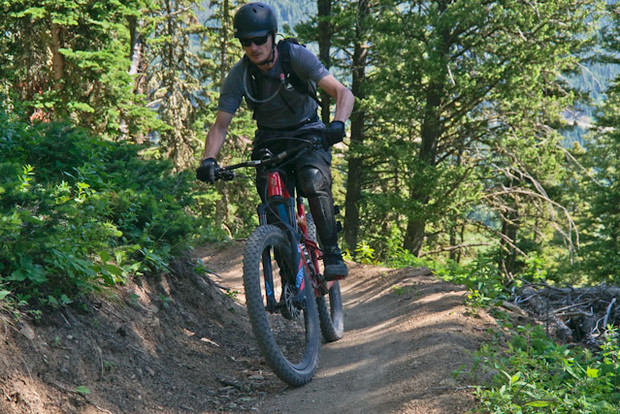 The Ibis Mojo 3 is just one damn fun bike to ride around, and somehow even makes climbing fun. Ryan Dunfee photo.
The Ibis Mojo 3 is just one damn fun bike to ride around, and somehow even makes climbing fun. Ryan Dunfee photo.
If you haven’t caught on to my enthusiasm about the
Mojo 3 just yet, here’s my chance to tell you how awesome this bike is. It’s the best full suspension plus-sized bike I’ve ridden to date. It turn trails into playgrounds, begging to be popped and railed and bounced down the trail, and it climbs like a freakin’ mountain goat on the way back up for a second lap.
The Mojo 3 isn’t as DH-oriented as bikes with more progressive geometry, but that’s exactly what makes this bike so much fun for anyone to ride. And I can’t get over the fact that you can change this bike’s personality just by swapping out tires, which is something one can easily pull off for under $150.
